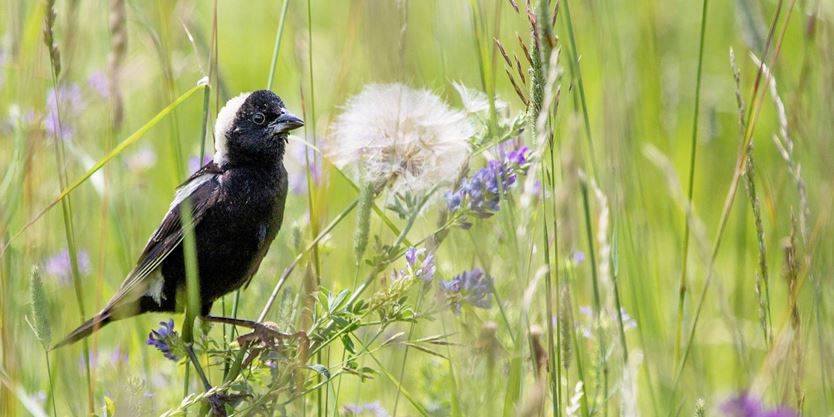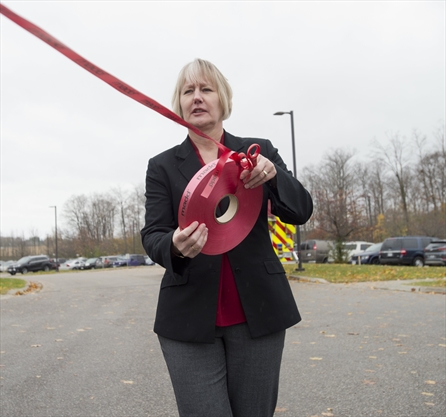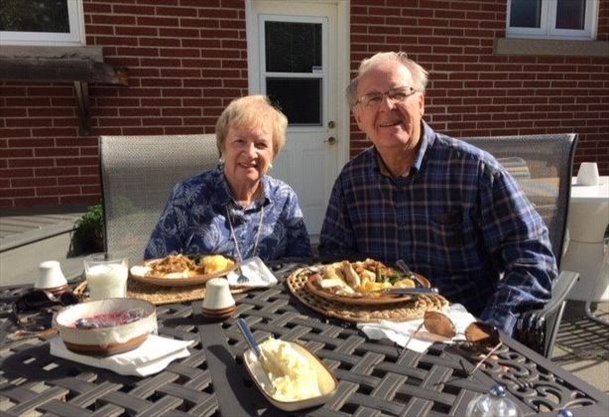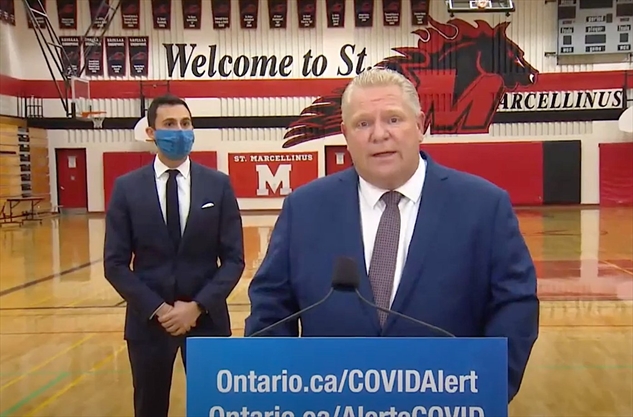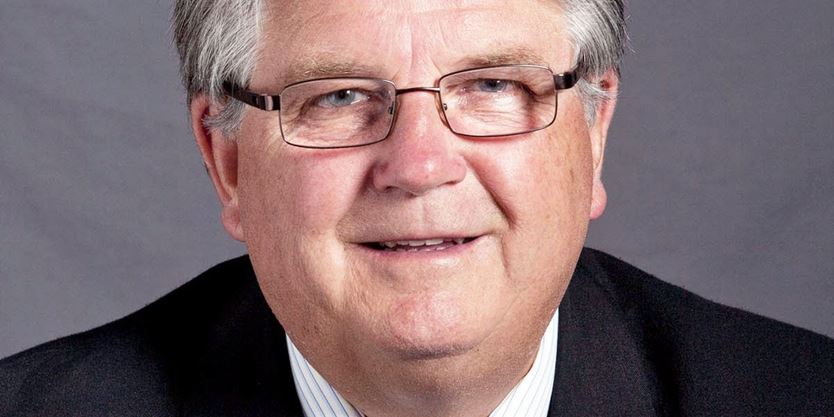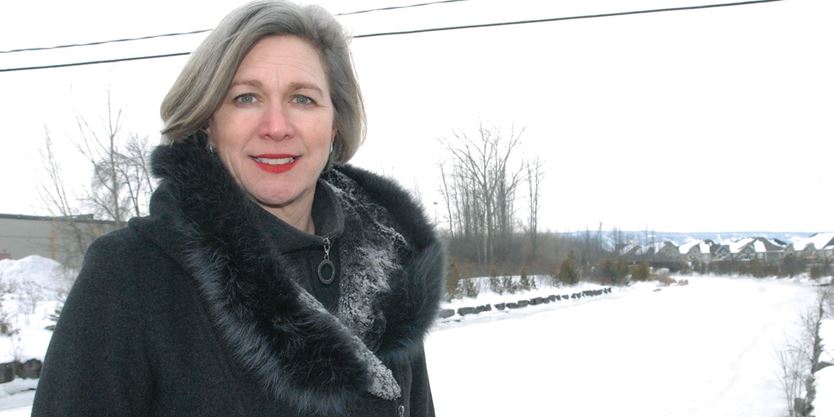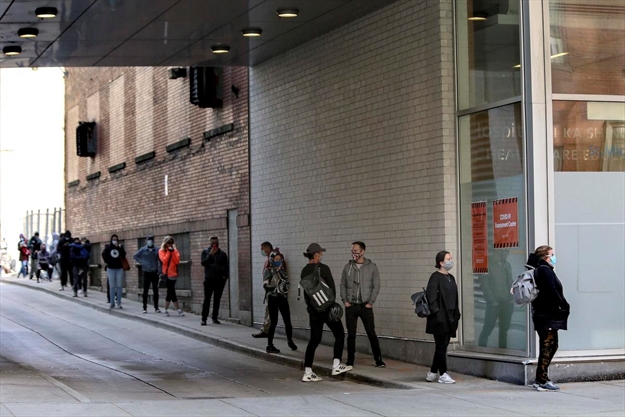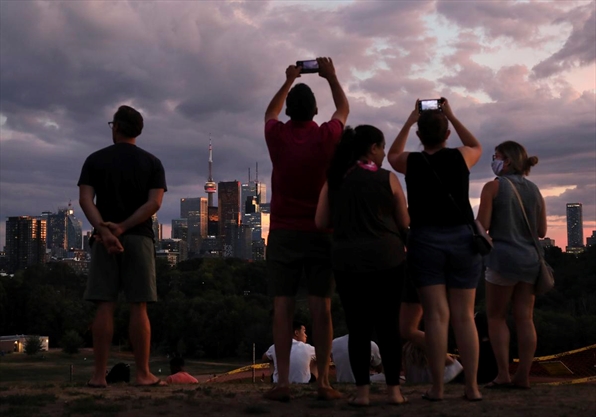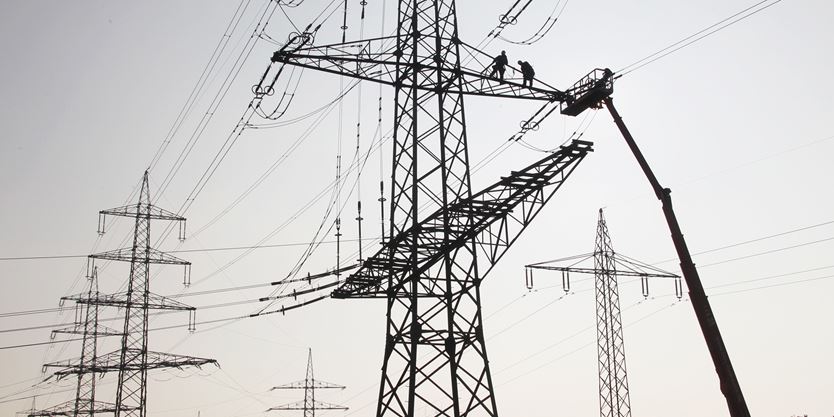The latest news from Canada and around the world Wednesday. This file will be updated throughout the day. Web links to longer stories if available.
7:18 p.m.: Prime Minister Justin Trudeau is promising to do more to help provinces respond to soaring demands for COVID-19 testing but there is still no indication of when the government will approve the tests that can deliver results in mere minutes.
Health Minister Patty Hajdu has said her department isn’t satisfied that the testing systems submitted for approval yield accurate enough results.

In Wednesday’s throne speech, the government said it is “pursuing every technology and every option for faster tests for Canadians.” Once they are approved, the government promises to deploy them quickly, and is creating a “testing assistance response team” in the meantime to help with the insatiable growth in demand.
“Canadians should not be waiting in line for hours to get a test,” Gov. Gen. Julie Payette read from the speech Wednesday.
6:49 p.m.: The owners of a private long-term care home in suburban Montreal where dozens of residents died during the COVID-19 pandemic in March and April displayed “organizational negligence,” according to a new report.
The Quebec government released the report into Residence Herron on Wednesday, as well as a separate report that looked into a public long-term care home north of Montreal where 100 residents died.
In total, 38 people died at Residence Herron between March 26 and April 16, including 23 who died in less than a week between April 5 and 10, the report states.
Commissioned by the provincial government, the investigation concludes that authorities at Herron repeatedly failed to address shortcomings noted in prior inspection reports and in a coroner’s report, largely because of vacancies in key posts and a turnover rate that reached 20 per cent a year.
“It is clear with such a turnover of staff, things must continually be redone,” the report reads.
The report details the chaos that followed the discovery of a first case of COVID-19 on March 26, and its devastating effects on a residence that was described as ill-prepared to confront a pandemic.
6:30 p.m.: Prime Minister Justin Trudeau says families won’t likely be able to gather for Thanksgiving, but it’s not too late to save Christmas.
In an address to Canadians on the state of the COVID-19 pandemic, he says the actions we take now will determine the course of the virus in Canada through the fall.
He says a second wave is underway in four provinces, with national daily case counts having tripled the last few weeks, and the fall could be much worse than the spring.
He says we got the pandemic under control then and we can do it again if we keep wearing masks, use the government’s exposure-alert app and obey other public health instructions.
6:12 p.m. Public Health Ontario’s says its lab is “currently unable to access or issue patient test results,” citing an “unexpected outage.”
“Some laboratory test reports may be delayed as a result. If you require assistance, please call our Customer Service Centre at to leave a message or speak to an agent. We are working to get back to normal operations as fast as possible and will post updates here,” the site says. “We apologize for the inconvenience.”
5:30 p.m. Ontario’s regional health units are reporting slightly fewer new cases than their recent average on Wednesday, according to the Star’s latest count.
As of 5 p.m., the health units were reporting another 373 new confirmed or probable cases, slightly below a trend that has seen the rate of new infections grow at an accelerating pace since early August.
The province’s seven-day average for new cases is now at 403 new cases daily, the first time that rate has been above 400 since late May, and double what the health units were reporting just 10 days ago on Sept. 13.
Ontario last saw such rapid exponential growth before the pandemic’s first peak in the spring. Although Ontario is still well below that peak level — about 600 infections a day, reported in late April — the current rate of case growth, if sustained, would see the average eclipse that rate by early October.
Wednesday saw significant case totals reported across the province: Toronto reported 129 new cases; Ottawa reported 65; Peel Region had 62; York Regions added 35; Waterloo Region 17; Middlesex-London 12 and Halton Region 11.
The province has now seen a total of 50,417 confirmed or probable cases of COVID-19, including 2,876 deaths.
Four fatal cases were reported in the last 24 hours. Two in Peel Region and one each in Ottawa and Hamilton.
The vast majority of the province’s COVID-19 patients have since recovered, and the recent rise in cases has not yet resulted in an equivalent jump in hospitalizations or deaths. That’s in part because the recent increase has not yet hit the vulnerable outbreak settings — like long-term-care homes — . Rates of hospitalization and death have also tended to lag behind weeks behind case jumps.
The province lists 3,652 active cases of the disease, a number that has been rising in recent weeks.
The Star’s count includes some patients reported as “probable” COVID-19 cases, meaning they have symptoms and contacts or travel history that indicate , but have not yet received a positive lab test.
The province cautions its separate data, published daily at 10:30 a.m., may be , saying that in the event of a discrepancy, “data reported by (the health units) should be considered the most up to date.”
4:58 p.m. Quebec has begun rolling out a COVID-19 advertising campaign aimed at putting a human face on the deadly virus and reaching those who discount its severity.
The ads — the first of which was released Tuesday night — include testimonials of those impacted directly by COVID-19.
In the first spot, the camera focuses on Francis, a general contractor who recounts spending 45 days in hospital, including 12 in a coma. He underwent a tracheotomy and now breathes through an opening in his neck.
“Believe me,” he concludes, “COVID-19 is serious.”
With public health officials saying the province hit hardest by COVID-19 is experiencing a second wave, efforts have intensified to reach a segment of the population that has felt the virus’s risk is overhyped.
But some marketing experts do not believe the government is striking the right tone or that the message will reach the right people.
“Fear is not a good motivator,” said Benoit Duguay, a professor in the Université du Québec à Montreal’s school of management.
“You’re going to scare the wrong people. You are going to scare the people who are already scared and the people who are not scared, it will not change their attitude or behaviour in any way, form or fashion.”
The other issue is that the recent spike in infections has been most pronounced among younger people, who won’t necessarily see themselves in the first advertisement featuring a middle-aged contractor.
2:45 p.m. Prince Edward Island is reporting one new case of COVID-19, for a total of 58 in the province.
Health officials say the new case involves a woman in her 20s who arrived to the Island on Sept. 20 from outside the country.
The province says the woman came to the province for work that is not related to the health-care sector and has been isolating since her arrival, so the risk of transmission is very low.
Officials are asking anyone on flight AC128 from Vancouver to Toronto and flight AC7460 from Toronto to Charlottetown to monitor themselves for symptoms of COVID-19.
2:15 p.m. (updated) The City of Toronto has announced the cancellation of a number of outdoor major events until the end of the year in an effort to curb the spread of COVID-19.
This decision follows the cancellation of all such events up to Sept. 30 announced by the City in July. Some City-led and City-permitted outdoor major events have already announced the cancellation of their event this year due to COVID-19 while others, such as the Santa Claus parade, will be announcing alternative plans in the near future.
The City’s Cavalcade of Lights and New Year’s Eve celebration on Nathan Phillips Square are among the events cancelled.
Events moving online include Nuit Blanche and CIBC Run for the Cure.
2 p.m. Manitoba has announced 42 new cases of COVID-19 in the province, saying the number of people testing positive in the capital city continues to surge.
Thirty of the cases are in the Winnipeg health region and the province announced possible exposures at restaurants, bars and during a trivia night at a pub.
The province also announced confirmed cases in three more schools, but said the infections were not acquired in the classroom and the risk for transmission there is low.
There are 11 people in hospital and five are in the intensive care unit.
There have been 1,674 cases in Manitoba and 18 people have died.
1:45 p.m. New Brunswick is reporting one new case of COVID-19 today.
Health officials say the new case is an individual between 60 and 69 years old in the Miramichi region.
They say the case is related to travel from outside of the Atlantic bubble and the individual is self-isolating.
The number of confirmed cases in New Brunswick is 197 and 191 people have recovered, while there have been two deaths and four cases are still considered active.
1:10 p.m. (updated) Premier Doug Ford says up to 60 pharmacies across the province will begin to offer COVID-19 tests starting Friday.
He says the initiative will reduce pressure on the province’s 147 assessment centres, some of which have seen long line-ups in recent weeks.
The pharmacies will only test individuals with no symptoms after they have made an appointment.The testing initiative is the second part of the government’s fall pandemic preparedness plan.
Ford also says three Ontario hospitals will begin offering saliva testing.
12:54 p.m. Ontario’s education minister says he is considering shortening the list of COVID-19 symptoms that require kids to stay home from school.
Stephen Lecce says he is working with the province’s medical officials to consider possible changes to the list.
British Columbia shortened its list earlier this week by removing 10 symptoms, prompting Ontario to review the data behind that decision.
Officials in B.C. removed symptoms such as a sore throat, runny nose, and headaches from their list.
Ontario’s school reopening plan requires parents to screen their children for COVID-19 symptoms and keep them home if they display signs of the virus.
Students are permitted to return to class when they no longer display symptoms.
12:42 p.m. More than 400 schools in Quebec and another 153 in Ontario are reporting at least one case of coronavirus disease.
The figures from the group COVID Ecoles Quebec and the Ontario government come as authorities across Canada battle a second wave of COVID-19.
Data from Ontario show cases among people in their 20s have risen sharply in recent months.
One expert attributes the increase among younger Canadians in part to the reopening of schools and universities.
Several provinces and universities have warned of stiff fines for violating anti-COVID restrictions.
However, Quebec says it will not allow police to enter homes without a warrant to break up gatherings that violate the measures.
In all, COVID has killed about 9,250 people in Canada, as the cumulative case count edged toward the 150,000 mark.
12:35 p.m. Despite the steady rise of COVID-19 cases in a country already hard-hit by the virus, Belgian Prime Minister Sophie Wilmes said Wednesday that mask requirements, some attendance limits and other public health measures will be relaxed as part of a less stringent, long-term coronavirus strategy.
Wilmes said Belgium residents should learn to live with the virus but warned against a “widespread slackening” of the basic social-distancing rules.
“We are in a risk-management phase,” she said after a National Security Council meeting. “Some rules will be relaxed because they are no longer useful or tenable.”
Starting next month, Belgium no longer will require wearing a mask outdoors except in crowded places where social distancing cannot be practiced. The government also is reducing the mandatory quarantine period from 14 days to one week for people with COVID-19 symptoms who eventually test negative for the virus.
While a maximum of 10 guests will remain the rule for private gatherings, parties or weddings hosted by professional organizers won’t be subject to the limit.
12:23 p.m. Canada’s chief public health officer says the country saw an average of 1,123 new COVID-19 cases each day over the past week, compared to 380 cases reported daily in mid-August.
Dr. Theresa Tam says that increase is cause for real concern as Canada is now on track for what she describes as a “big resurgence” in several provinces.
Tam says while the new cases continue to be primarily among young adults, the impacts affect the entire population.
Tam did offer one bit of good news as the number of daily laboratory tests conducted the country has increased to almost 70,000 over the past week, with 1.4 per cent of people testing positive for the illness.
12:18 p.m. A Halloween night that falls on both a Saturday and a full moon would normally be ideal for spooky festivities, driving up sales of candy, costumes and decorations.
But with cases of on the rise, experts expect retailers to see soft demand for Halloween supplies as plans are scaled back and trick-or-treating is questioned altogether.
They add that sales related to the spooky celebration may also serve as an indicator for what retailers can expect this Christmas, the largest shopping season of the year.
Farla Efros, president of HRC Retail Advisory, says Halloween is a significant portion of business for many retailers and candy makers.
She says the lack of gatherings, office parties and trick-or-treating could lead to soft sales for retailers from grocers to specialty Halloween pop-up stores.
11:45 a.m. A hospital in Kitchener, Ont., says it has closed its drive-through COVID-19 testing centre for the day over concerns for the safety of its staff and the public.
The Grand River Hospital says vehicles began to line up at 2:30 a.m. Wednesday morning, five hours before opening time.
Spokeswoman Cheryl Evans says that by 7:30 a.m., traffic was backed up on all the nearby side streets and the centre was already at capacity.
She says some people in line were getting impatient and displayed some “aggressive behaviours,” which contributed to the decision to temporarily shut down.
The hospital says those currently in line will be tested.
The centre is expected to reopen Thursday.
11:16 a.m. The Durham Region Health Department resulted in 34 people in Durham receiving false positive COVID-19 results this past weekend.
That includes, one at Pierre Elliott Trudeau P.S. and one at Maple Ridge P.S.
The Maple Ridge result prompted the health department to declare an outbreak at the school on Sept. 19 because it represented a third positive case.
The decision to declare an outbreak has been reversed.
11:15 a.m. The number of new active cases in publicly funded schools across the province has jumped by another 30 per cent to a total of 180.
, the province reported 42 more school-related cases — 21 more students were infected for a total of 77; five more staff members for a total of 38 and 16 more individuals who weren’t identified for a total of 65.
There are 153 schools with a current case, which the province notes is 3.17 per cent of the 4,828 publicly funded schools.
.
11:10 a.m. Quebec is reporting 471 new cases of COVID-19 and four additional deaths attributed to the novel coronavirus.
Health officials said one of the deaths was reported in the past 24 hours while three others occurred between Sept. 16-21.
Hospitalizations increased by ten patients for a total of 178, with 30 of those in intensive care.
The province has now reported 69,088 confirmed COVID-19 cases and 5,809 deaths linked to the virus.
10:55 a.m. Ontario is reporting 335 new cases of COVID-19 today, along with three new deaths related to the virus.
Health Minister Christine Elliott says there are 102 cases reported in Toronto, 79 in Peel Region and 65 in Ottawa.
She says 69 per cent of the new cases are in people under the age of 40.
The province is reporting an additional 258 cases as resolved today.
10:55 a.m. Quebec will not send police into homes without a warrant to break up house parties or private gatherings that don’t respect COVID-19 rules.
Public Security Minister Genevieve Guilbault said today the province is not looking at giving police such powers at this time.
On Tuesday, Quebec Health Minister Christian Dube said the government had not ruled out allowing police to intervene without a warrant, but it would be a last resort.
The province is into a second wave of COVID-19 cases with much of the transmission in the community being driven by private events and gatherings.
10:35 a.m. (updated) Toronto police said 14 people in Scarborough were fined $880 each Tuesday night after officers were called for a “noisy party” in the Kingston Road and St. Clair Avenue East area.
Police said there were about 50 people at the party.
Officers issued 14 provincial offence notices under the Reopening Ontario Act for failure to comply with an order.
“Blatant disregard of rules meant to protect us all,” said Const. Randall Arsenault in a about the incident.
Police said during their investigation, a man was arrested on an outstanding warrant and transported to Halton police.
The Reopening Ontario Act extended specific emergency orders in the province. The provincial government announced on Sept. 17 that there would be new gathering limits in Toronto to 10 people indoors and 25 outdoors in a bid to curb the increasing spread of COVID-19.
10:19 a.m. Ontario is reporting 335 new cases of COVID-19 Wednesday, along with three new deaths related to the virus.
Health Minister Christine Elliott says there are 102 cases reported in Toronto, 79 in Peel Region and 65 in Ottawa.She says 69 per cent of the new cases are in people under the age of 40. The province is reporting an additional 258 cases as resolved today.
The total number of cases in Ontario now stands at 48,087, which includes 2,835 deaths and 41,600 cases classified as resolved.
The province says it processed 35,436 tests over the previous day, with another 48,079 under investigation.
The latest numbers come as the Progressive Conservative government is expected to reveal another part of its fall pandemic preparedness plan today.
Yesterday Premier Doug Ford announced that the first part of the strategy involved spending $70 million to purchase millions of seasonal flu shots, which he encouraged all residents to get.
Opposition critics slammed the message, saying it wasn’t nearly enough to address rising COVID-19 case numbers across the province.
Meanwhile, the government says it will hire 98 new labour inspectors this fall as part of efforts to prevent the spread of COVID-19 in workplaces.
9:43 a.m. After postponing several shows because of the coronavirus pandemic, Elton John is saying hello to the yellow brick road of touring.
The pop icon announced Wednesday that his “Farewell Yellow Brick Road Tour” will return to North America on Jan. 19, 2022, in New Orleans. John also announced rescheduled 2022 dates for Houston, Detroit, New York City, Miami, Toronto and Montreal.
In July John announced new dates in Europe. His global tour will officially return on September 1, 2021 in Berlin.
“I’ve been enjoying my time at home with the family while the world navigates its way through the COVID pandemic. But, I really miss being on the road and performing for my beloved fans in my Farewell Yellow Brick Road Tour,” John said. “While the scientists are making great progress, we are making big plans for a return to touring that will allow us to ensure the health and safety of everyone.”
9:40 a.m. Two oil-rich Arab Gulf states suffered severe economic blows on Wednesday, as a major credit agency downgraded Kuwait for the first time and the United Arab Emirates acknowledged its economy would contract to a level last seen in 2009.
The agency, Moody’s Investors Service, cut Kuwait’s debt rating and sounded the alarm that its “liquid resources are nearing depletion.” With the government failing to pass a public debt law, Kuwait has drawn from its reserve fund to keep spending — at a pace that could prove unsustainable. Moody’s warned that government “gridlock” and ineffective debt management would erode Kuwait’s financial strength in the years ahead.
Even if Kuwait managed to push through a debt law without a ceiling, Moody’s projects that some $90 billion (U.S.) would still be needed to plug the funding gap until 2024. Despite growing “liquidity risks,” Kuwait’s government has not sought access to its sovereign wealth fund, one of the largest in the world, intended as fortune for future generations after the oil runs out.
Meanwhile, the UAE’s Central Bank reported the country saw a “significant decline in economic activity” as a result of its COVID-19 lockdown, one of the strictest in the world. Virus-induced restrictions closed borders, grounded flights, shuttered businesses and disrupted global supply chains — upending the economic foundation of the region’s “trade, tourism and transportation hub,” the bank’s quarterly review said.
9:39 a.m. French tennis player Benoit Paire was allowed to compete at the Hamburg Open despite twice testing positive for the coronavirus, he said Wednesday.
Paire retired from his opening-round match while trailing Casper Ruud 6-4, 2-0 on Wednesday, but it was unclear why.
Paire withdrew from the U.S. Open after testing positive and spending more than a week in isolation. He then played at the Italian Open last week, losing in the first round.
According to German news agency dpa, Paire said he twice tested positive while in Hamburg but then had a negative test. Paire said he was not sure if he would play at the French Open, which begins Sunday, and would end his season early if he wasn’t allowed to compete.
9:07 a.m. Tokyo Olympics officials are proposing that the government relax immigration regulations to allow athletes to enter the country before next year’s postponed games and train during a 14-day quarantine period, Toshiro Muto, the CEO of the organizing committee said on Wednesday.
“We have to consider the uniqueness of the athletes and also their activities,” Muto said, speaking in Japanese following a meeting of a task force considering countermeasures against the COVID-19 pandemic.
The International Olympic Committee, Tokyo city and national government officials, and members of the organizing committee are holding virtual meetings on Thursday and Friday focused on finding ways to hold the delayed Olympics during a pandemic.
The organizing committee and the IOC have said for months they are considering many scenarios for how the games can open on July 23, 2021, but have offered nothing specific.
IOC President Thomas Bach, who will address the online meetings on Thursday, has said a vaccine and rapid testing would help, but added there is no “silver bullet” that will allow the Olympics to automatically happen.
9:03 a.m. Germany’s coronavirus tracing app has been used to transmit 1.2 million test results from labs to users during its first 100 days, officials said Wednesday.
The Corona-Warn-App, downloaded more than 18 million times since its launch in June, was touted by the government as a key tool in the country’s effort to contain the spread of the virus.
The app, like others in Europe, has suffered a number of technical hiccups, but Health Minister Jens Spahn insisted it should be considered a success. He noted that most app users can now get their COVID-19 test result sent directly to their smartphones, without having to wait for their doctor to inform them.
“The faster transmission of test results makes a huge difference,” Spahn said, adding that the tracing of possible contacts is all the more effective the sooner it begins.
Almost 5,000 people with positive test results have so far used the app to warn others they were in close contact with, he said.
8:41 a.m. The International Judo Federation has cancelled an event in Japan because of the coronavirus pandemic.
The IJF had announced a return to international competition after a months-long pause with Grand Slam events in Budapest, Hungary, next month and in Japan in December. They were intended to be part of qualification for the postponed Tokyo Olympics.
The Budapest competition now needs to be confirmed within two weeks “pending on a decision from the Hungarian government.”
8:29 a.m. Prime Minister Justin Trudeau will make a televised national address Wednesday night within hours of Parliament’s resumption to speak to Canadians about the “urgency of fighting COVID-19.”
Trudeau’s office approached television broadcasters Tuesday to request airtime to address the nation, his office said, “as we face down the prospect of a second wave of the virus.
The prime minister will also give “a summary of the government’s plans in the throne speech to fight the virus and build our economic recovery,” said his spokesman Cameron Ahmad in a statement to media.
A senior Liberal government official told the Star that the rise in coronavirus infections has put Canada at a “very risky crossroads.”
“We’re basically at war here,” said the official.
8:28 a.m. As a feared second wave of infections appears to be arriving in Ontario and Quebec, insiders say Justin Trudeau’s Liberal government will lay out a plan to curb the spread of COVID-19 and get Canada through and beyond the pandemic.
Parliament returns to work Wednesday with a “hefty” throne speech that sources said has three goals: fight and curb the immediate health crisis, provide economic support for individuals and hard-hit sectors through the medium-term, and a longer term economic agenda for “a resilient and strong Canada.”
One senior Liberal official, speaking on background, said the pandemic period will last “much longer than any one of us would like,” and the government’s plan for the recovery will promote longer-term job creation through “cleaner economic growth,” along with “inclusive” social measures and health-care investments “that are necessary to support that economic growth.”
7:15 a.m. After 27 years of operation, Laser Quest is closing stores across Canada, it said in a statement on Tuesday.
“As much as we wanted to re-open, the COVID-19 pandemic and the resulting uncertain economic climate have made the continued operation of Laser Quest North America next to impossible,” the company said. The laser tag site has often played host to birthday parties and other events in venues across Canada and the U.S.
“Over the past 27 years Laser Quest has brought fun to life with countless birthday parties, day camp and youth group events, plus numerous corporate and educational outings.”
Though, according to their website, some of their centres will reopen in the future under new leadership.
6:40 a.m. Health authorities in Madrid may extend to more communities the restrictions on movement it imposed on areas of the Spanish capital with high coronavirus infection rates.
About 860,000 Madrid residents already are required to justify trips out of 37 neighbourhoods, mostly working-class areas. People have complained that the restrictions stigmatize the poor.
The region’s deputy health chief, Antonio Zapatero, said Wednesday that a decision on additional measures, including possible customer limits in restaurants, would be announced on Friday,
Zapatero said the outbreak situation in the Madrid region, which has a population of 6.6 million, was one of “sustained increase.”
Madrid had a contagion rate of 772 cases per 100,000 inhabitants in 14 days, nearly three times Spain’s national average of 287 cases per 100,000.
5:31 a.m. The British government is defending its strategy for combating a second wave of coronavirus infections from criticism that new restrictions didn’t go far enough to stop the exponential spread of the virus.
Prime Minister Boris Johnson unveiled a slate of new rules on Tuesday to stem the renewed outbreak, including a 10 p.m. curfew on bars and restaurants, increased use of face masks and again encouraging people to work from home.
Foreign Secretary Dominic Raab told Sky News on Wednesday that the government’s approach was “focused, balanced and proportionate.” He says that if everyone complies with the measures, they will be enough to prevent a second national lockdown “with all the impact on society and families but also the damage it would do to businesses.”
Many health experts said the government’s plan wouldn’t be enough to stop the rapid spread of COVID-19 infections.
The dean of epidemiology and population health at the London School of Hygiene and Tropical Medicine, John Edmunds, says the government needs to quickly impose much wider restrictions or risk losing control of the virus.
5:28 a.m. India reported more than 83,000 new coronavirus cases on Wednesday, showing some decline after reaching a record a week earlier.
The country has now confirmed more than 5.6 million cases. The health ministry also reported 1,085 new fatalities, raising the death toll to 90,020.
India is expected to become the world’s worst-hit country within weeks, surpassing the United States, where nearly 6.9 million people have been infected by the virus.
But the past week has seen some improvement in India, with the numbers dropping after a record 97,894 new cases were reported on Sept. 16.
5:20 a.m. Israel on Wednesday reported a new record level of daily cases of coronavirus, shortly before government officials were to meet to discuss tightening a new nationwide lockdown.
The Health Ministry reported 6,861 new cases Wednesday as a raging outbreak showed no signs of slowing. Israel, a country of some 9 million people, now has one of the world’s highest rates of coronavirus on a per capita basis, and health officials say hospitals are quickly approaching capacity.
The government last week imposed a nationwide lockdown that closed schools, shopping malls, hotels and restaurants. The coronavirus cabinet was meeting later Wednesday to discuss further tightening the restrictions.
Israel won international praise for its handling of the outbreak last spring, moving quickly to seal its borders and impose a lockdown that appeared to contain the virus. But the government reopened the economy too quickly, and a new outbreak has quickly spread throughout the summer. The economy, meanwhile, has not recovered from a serious downturn caused by the first lockdown.
The Health Ministry has instructed hospitals to delay non-essential surgeries and to open additional coronavirus wards as the number of serious cases continues to rise.
5:14 a.m. An Austrian consumer protection group said Wednesday it has filed four civil lawsuits against the country’s government for failing to contain a coronavirus outbreak at an Alpine ski resort during the early phase of the pandemic that has been blamed for thousands of infections around the world.
Peter Kolba, who heads the VSV consumer association, said the four cases —involving an Austrian and three Germans — will test the ground for a further 1,000 people who have asked to be represented by the group after falling ill with COVID-19 following a trip to Ischgl in February and March.
The outbreak in Ischgl, a resort in western Austria that’s popular with skiers across Europe, is considered one of the earliest ‘superspreader’ events on the continent.
5:09 a.m. The first day of the B.C. election campaign featured conflicting views on just how well the three parties were getting along in the minority legislature.
NDP Leader John Horgan says he called the election because he feared “contempt” and “acrimony” between the parties would divert focus away from the COVID-19 pandemic, making an election necessary.
He also wasn’t sure the minority NDP government would be able to pass a budget in February with the prospect of a confidence vote forcing an election.
But Green Leader Sonia Furstenau disputes Horgan’s take on how things were going, adding she told him as recently as Friday that her party was committed to a stable government.
B.C. Liberal Leader Andrew Wilkinson, meanwhile, called for three televised debates during the Oct. 24 election campaign so voters can hear what each party has to offer.
5:05 a.m. A promised reset of federal priorities to focus on the COVID-19 pandemic begins today with the Liberal government’s speech from the throne. The nearly hour-long speech is expected to address three areas: immediate action to push back against a second wave of the pandemic, supports for those still not back on their feet after the first wave, and how the economy might be further rebuilt once it can stand more on its own.
Prime Minister Justin Trudeau’s plan comes as public health officials are warning the country is but a few house parties away from plunging into a full-blown second wave.
He’s expected to address that potential crisis in a televised address Wednesday night following the throne speech.
4 a.m. Ontario says it will hire 98 new labour inspectors this fall as part of efforts to prevent the spread of COVID-19 in workplaces.
Labour Minister Monte McNaughton says the government will begin to recruit the workers in October.
The hiring blitz will increase the number of government inspectors from 409 to 507 and will cost $11.6 million.
McNaughton says the inspectors will allow the government to respond faster to situations that may arise during the pandemic.
Labour inspectors investigate workplace hazards, injuries, fatalities and work refusals.
Tuesday 8:45 p.m. A faculty member at Branksome Hall and two students at The York School have tested positive for , as confirmed by notices put out by the schools on Monday.
Toronto Public Health is working with both school communities on further precautions to take now that they have positive cases, which includes contact tracing.
Karen Jurjevich, the principal of Branksome Hall, says the employee who contracted the virus at her school was teaching Grade 8 classes on Sept. 18 and symptoms started showing over the weekend.
The employee went to get tested and is now recovering in self-isolation, she says.
“We recognize how challenging this is for you and your child as we are only two weeks into the academic year. Our priority will always be the health and safety of your child and the broader community,” said Jurjevich.
Struan Robertson, the head of The York School, confirmed that two students who are siblings and attend the Junior School contracted the virus.
The two students were considered asymptomatic when they were last at the school on Sept. 17, Robertson says. Both siblings have been self-isolating at home since last week.

